You'll need consistent temperatures between 200°F and 350°F to bake pastries successfully in a solar oven. The ideal baking window falls between 11:00 am and 3:00 pm when sunlight is strongest. Your ambient temperature should be above 75°F for best results, and you'll want to reorient your oven hourly to maintain steady heat. While traditional browning can be challenging at these temperatures, proper insulation techniques and heat retention methods can help achieve the desired results. Various factors like weather, location, and season will influence your solar baking success.
Essential Temperature Ranges
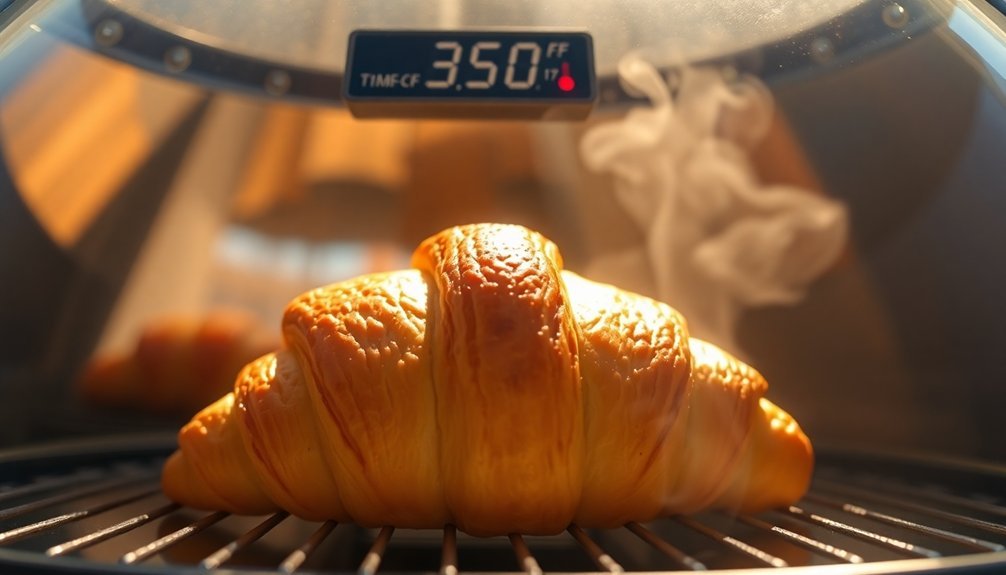
While solar ovens may seem less precise than conventional ovens, they can reliably achieve temperatures between 200°F and 350°F for pastry baking. You'll find that under ideal conditions, these eco-friendly ovens maintain temperatures comparable to conventional ovens, making them suitable for various pastry recipes.
On hot, sunny days, you can expect your solar oven to reach maximum temperatures of 300°F to 350°F, which is perfect for most pastry baking needs. Even on sunny but cold days, you'll still achieve minimum temperatures around 250°F, allowing you to continue baking effectively. Using an oven thermometer is crucial for monitoring accurate temperature readings in your solar oven.
The gentle heat distribution in solar ovens helps preserve your pastries' nutritional value while guaranteeing thorough cooking.
You'll need to adjust your baking times since solar ovens typically require double the cooking duration compared to conventional ovens. However, when your solar oven reaches 350°F, you can expect similar baking times to traditional recipes.
To maintain consistent temperatures, you should reorient your solar oven toward the sun every hour. This practice guarantees steady heat throughout the baking process, resulting in evenly cooked pastries with reliable results.
Perfect Solar Baking Hours
Understanding temperature ranges is just one part of successful solar baking – timing matters just as much. You'll want to plan your solar baking between 11:00 am and 3:00 pm when sunlight is most direct and intense. During these peak hours, you can achieve ideal heating for your pastries. For dishes like strawberry cobbler, you'll need to allow 1.5 to 2 hours of consistent sunlight exposure.
You should expect longer baking times compared to conventional ovens – typically double the duration. It's crucial to preheat your solar oven while preparing ingredients and use a timer adjusted for solar conditions. Quick-bake items like cookies work best when you have limited sunlight hours.
Weather conditions greatly impact your baking schedule. You'll need warm temperatures above 75°F for best results, and you should only bake when you can see clear shadows on the ground. Even on sunny winter days, your oven may only reach 250-300°F, affecting pastry outcomes.
Your location and season matter too. If you're in areas like Oregon, you might only use your solar oven 7-8 months yearly. In regions with less consistent sunlight, like NE Missouri, you'll need to carefully plan your baking around available sunny hours.
Heat Retention Methods
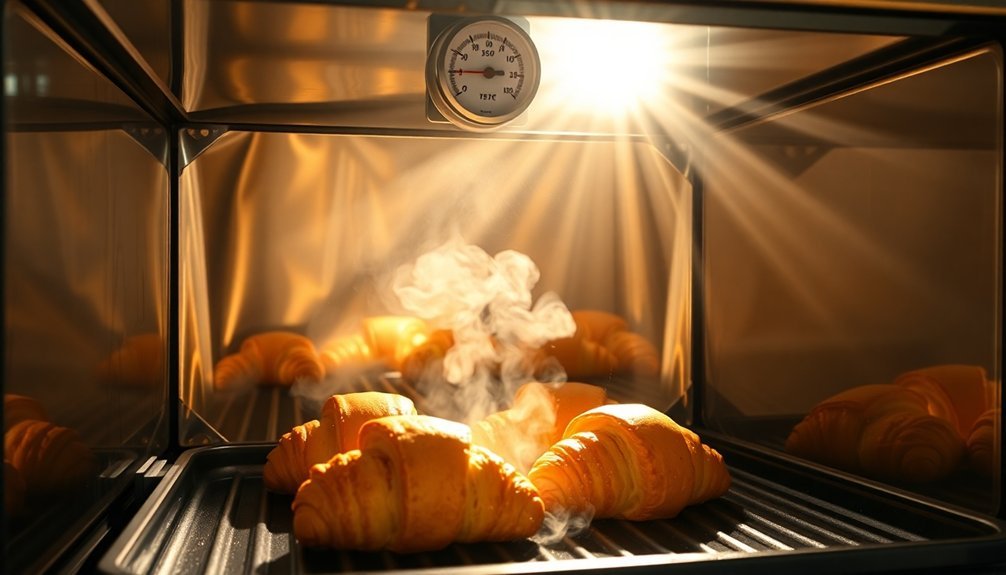
A well-insulated solar oven is essential for maintaining consistent baking temperatures for your pastries.
You'll need to line your oven with aluminum foil to reflect sunlight inward and cover it with plastic wrap or a clear window to trap the heat inside.
Place black paper at the bottom to absorb sunlight and create a heat sink, while using corrugated cardboard for insulation around the sides.
To prevent heat loss from condensation, you can add coconut fiber or silica gel packets to absorb moisture.
Position your oven at an angle so condensation drains away naturally. The tray should be positioned at at least 10 degrees for proper drainage.
When baking pastries, you'll want to avoid opening the oven frequently, as this causes notable temperature drops.
Instead, use an egg wash before baking to achieve browning without checking.
Your solar oven design matters notably.
Whether you're using a panel cooker like the CooKit or a tubular oven like the SunGood 360, you'll need temperatures above 150°C for proper pastry baking.
Simple solar cookers can reach 82-121°C, while advanced models can achieve up to 240°C.
For consistent results, always preheat your oven before adding your pastries.
Weather Impact On Baking
Weather conditions play a decisive role in successful solar pastry baking. You'll need full, direct sunlight and ambient temperatures above 75°F for best results. Cloud cover can greatly impact your baking time and temperature stability, while wind can disrupt heat retention and slow down the cooking process.
During summer months, you'll find better conditions for solar baking due to longer daylight hours and stronger sunlight intensity.
- Your pastries won't brown properly if clouds frequently block the sun
- Wind can cause temperature fluctuations that affect pastry texture
- Shadows from nearby buildings or trees will reduce oven efficiency
- Cold ambient temperatures will extend preheating and baking times
- Seasonal changes affect how long you'll need to bake your pastries
To maintain consistent temperatures, you'll need to adjust your solar oven's position throughout the day to track the sun.
During winter months, you might need to add extra insulation or plan for longer baking times. If you're dealing with partial cloud cover, expect your baking times to increase, and you'll need to monitor your pastries more closely to guarantee even cooking.
Pastry Browning Techniques
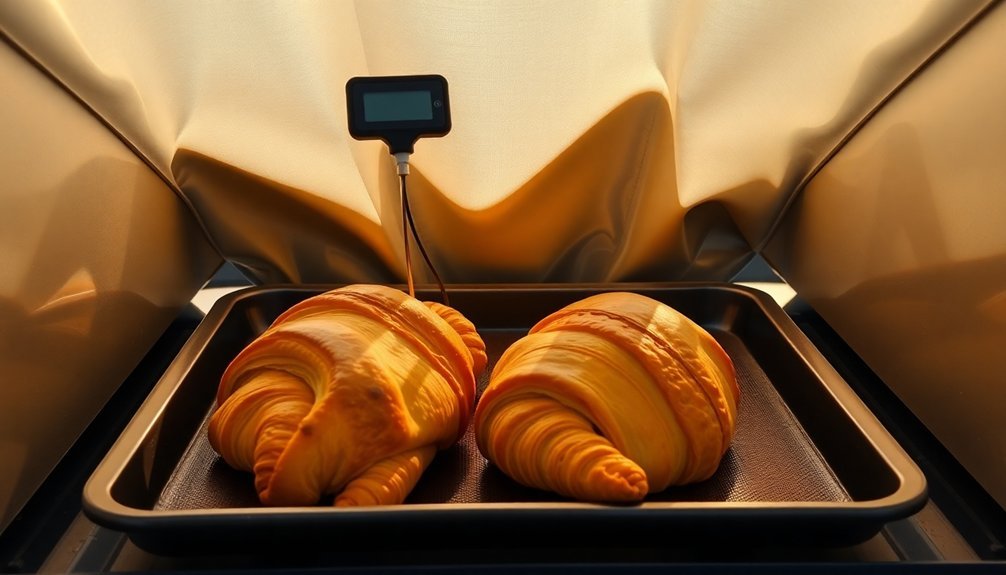
Mastering pastry browning requires specific techniques when using a solar oven's lower temperatures. Since solar ovens typically reach only 200°F, they're not suitable for traditional pastry browning methods that require temperatures between 325°F and 400°F.
You'll need to evaluate alternative baking methods for your pastries, as standard browning techniques won't work effectively at solar temperatures. While conventional ovens allow you to use egg washes (combining egg with milk for golden brown results) or milk brushing techniques, these won't achieve the desired effect in a solar oven.
If you're determined to bake pastries, you'll need to use a conventional oven where you can apply proper browning techniques. You can choose from several methods: brush with whole beaten egg for deep golden brown, use egg yolk mixed with water for moderate browning, or apply egg white for a shiny finish.
For enhanced browning, you can sprinkle sugar on top of your egg wash.
Remember to adjust your oven temperature based on your specific oven's calibration. Professional recipes may need modification for home ovens, and consistent application of your chosen browning agent is vital for even results.
Frequently Asked Questions
Can I Use Regular Cooking Pans in a Solar Oven?
Yes, you can use regular cooking pans in a solar oven, but make sure they're metal or ceramic. Choose pans that fit well, conduct heat evenly, and have non-reactive surfaces for the best results.
How Do I Prevent My Pastries From Sticking to the Solar Oven?
Use parchment paper or aluminum foil as a liner, and lightly grease your baking surface. You'll also want to keep your solar oven clean and dry, while using desiccants to manage moisture buildup.
Should I Rotate the Solar Oven During Longer Baking Sessions?
Yes, you'll need to rotate your solar oven every 30 minutes to follow the sun's path. This maintains ideal temperature and guarantees even baking. Regular adjustments improve cooking efficiency and reduce cooking time.
What's the Shelf Life of Pastries Baked in Solar Ovens?
You'll want to eat your solar-baked pastries within a day for best quality. Keep them in an airtight container in a cool, dry place. If you need longer storage, you can freeze them.
Can I Add Toppings Midway Through Solar Baking?
You shouldn't add toppings midway, as opening the solar oven drops temperature by 10+ degrees. If you must add toppings, do it quickly and be prepared for longer baking times and potential texture issues.
In Summary
You'll need to maintain 350-375°F (175-190°C) for most pastries in your solar oven, which means planning your baking between 10 AM and 2 PM on sunny days. To achieve golden-brown results, you'll want to use dark baking sheets and guarantee your oven's heat retention is strong. Don't forget, weather conditions will affect your baking time, so you'll need to monitor your pastries closely.


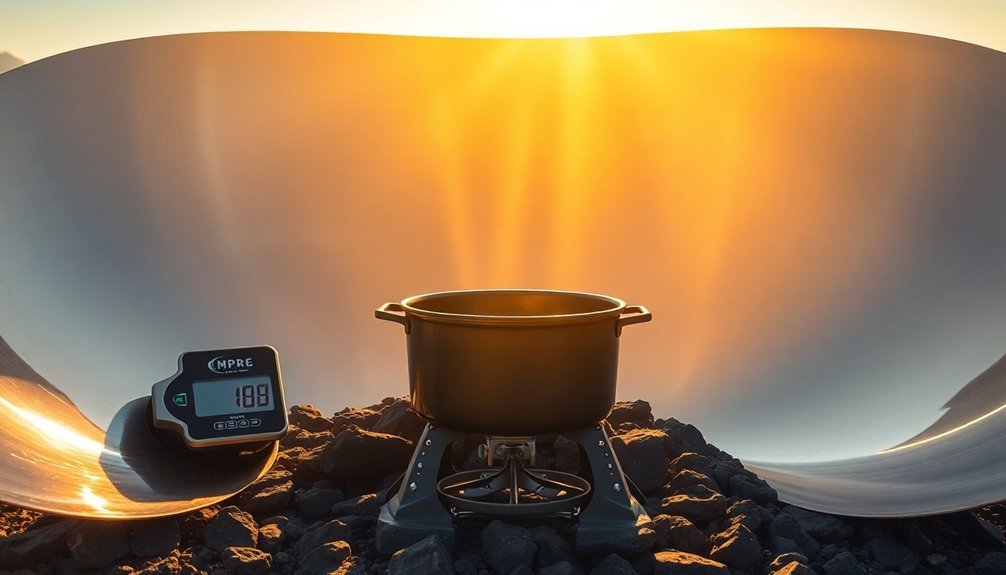
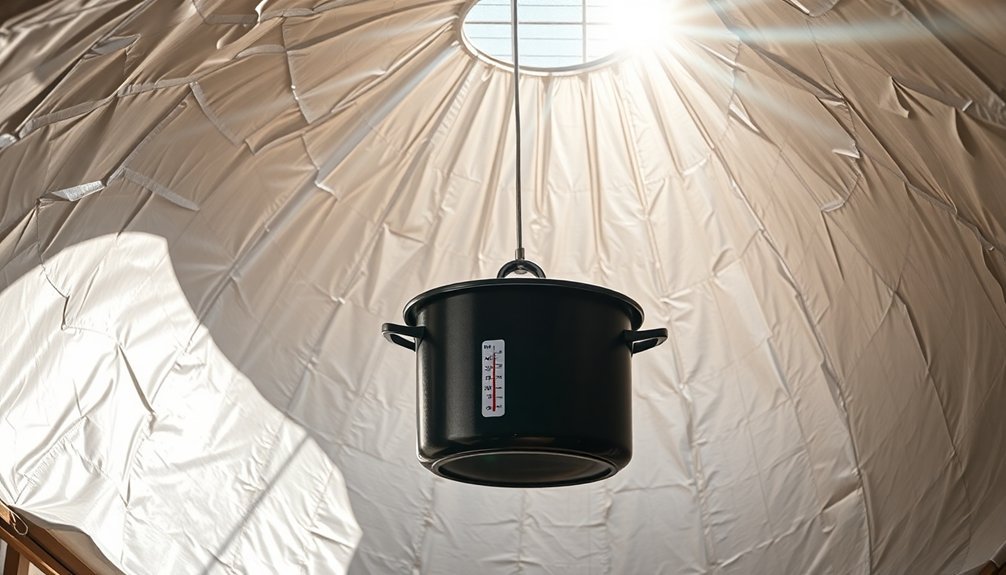
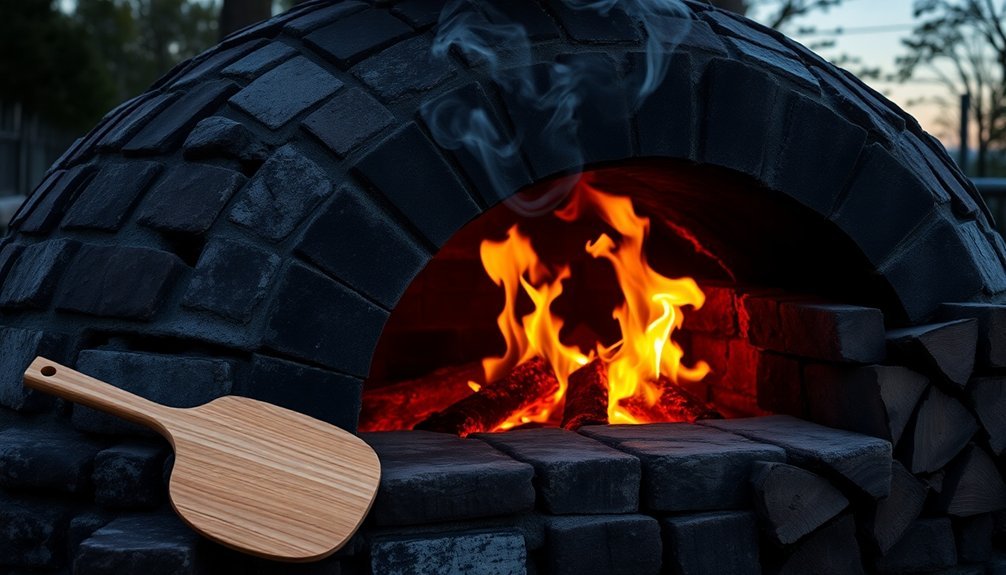
Leave a Reply